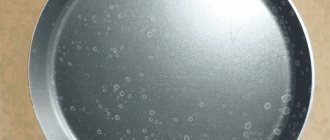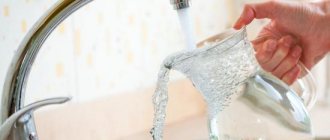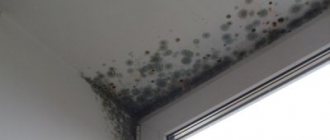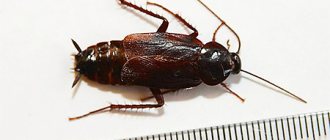02/14/201702/24/2017 Maria Ivanova
An aquarium in our apartment or office is a small corner of wildlife, an underwater world. It always pleases the owner's eye and attracts the views of guests.
Natural purity creates the illusion of a short-term immersion in the kingdom of Neptune. How can I make sure this feeling doesn’t go away? How to avoid water blooms and green deposits?
Description of the problem
Green deposits can be caused by different types of algae. The most common species found in aquariums are xenococus, protococus and “green dust”. If protococcus is present in an artificial reservoir, only the glass becomes covered with a green coating. “Green dust” can live not only on the walls of the tank, but also on the surface of the water, forming a film. Xenococus parasitizes glass, soil, decorations and higher plants.
Plaque formed by colonies of unicellular algae becomes compacted over time and is difficult to remove from surfaces. If the aquarium is heavily overgrown, the activity of pests can affect the quality of the water. Parasitism on higher plants interferes with photosynthesis and inhibits their growth.
What is needed for cleaning
To clean the aquarium you need cleaning equipment:
- scraper;
- siphon;
- sponges;
- bucket for draining water.
Clean your aquarium once a week. Cleaning is carried out in 8 stages:
- Place fish and other fauna.
- Clean the inside of the aquarium, removing plaque along the entire length with a scraper.
- Drain some of the water with the remaining algae into a bucket.
- Clean the soil with a siphon.
- Remove decorations and stones and thoroughly clean them of greenery.
- Wash the internal parts of the equipment with water taken from the vessel.
- Add pre-settled water.
- Wipe the outside of the tank.
Reasons for appearance
Single-celled algae are always present in small quantities in water bodies, but they begin to multiply quickly only when conditions change to favorable for them. The main reasons why greenery appears on the walls of the aquarium are as follows:
- accumulation of phosphorus more than 0.8 g/l;
- excess nitrogen compounds and disruption of the nitrogen cycle;
- water temperature is above 27°C or below 22°C;
- exposure to direct sunlight;
- daylight hours are too long;
- overfeeding the fish and overcrowding the aquarium;
- accumulation of organic matter;
- poor filtration;
- insufficient or slow growth of higher plants;
- excess or lack of fertilizers;
- increased salt content in water;
- infrequent cleaning and water changes.
The main reason is a violation of the nitrogen cycle and the balance of phosphorus and nitrogen, as well as the accumulation of organic matter. Normally, nitrogen compounds, phosphorus and organic matter are utilized by higher plants. If plant growth slows down for some reason (low water temperatures, lack of carbon dioxide, lack of fertilizers), unused nutrients accumulate in the water and become food for algae. Rare cleaning and water changes contribute to the accumulation of these compounds.
Methods and tools used for cleaning
Special equipment will help to clean the inner surface of the walls:
- glass scraper to remove dark deposits and algae;
- siphon to clean the soil;
- container (bucket, basin);
- net
Magnetic scraper for removing plaque
Siphon for soil purification
Net for catching fish
The scraper is selected depending on the size and type of the aquarium. It is better to give preference to magnetic. It is more expensive, but it collects dirt from the surface of the glass better. For these purposes, you can also use a regular sponge, not soaked in detergents.
A special soil cleaner will help rinse the aquarium sand without removing it outside.
If it is necessary to change the water, it is better to retrieve the fish using a net. It should also be chosen taking into account the size of the inhabitants, so as not to damage the fins when catching.
In addition to available tools, cleaning products are needed. Do not wash the aquarium with preparations that contain chemicals. If their particles remain inside, there is a possibility of harming the inhabitants. Baking soda is acceptable, but it can also be dangerous for fish. After cleaning the walls by any means, you need to rinse everything thoroughly with clean water.
If you cannot do without a special cleaning solution, it is advisable to use soap, Comet or Domestos.
Traditional methods
Since it is not recommended to use chemicals to remove plaque from glass, there are traditional methods for combating unwanted algae:
- 20 g of citric acid in powder form are dissolved in one glass of water, mixed and poured into a spray bottle. Then the walls are treated with this mixture, left for a quarter of an hour, and washed well.
- Dilute one part of ammonia in 10 parts of liquid and remove the mucus layer with the solution.
- 1 tbsp. l. acetic acid is mixed with one glass of water and applied to the surface that has begun to turn green.
Despite the fact that traditional methods are considered more gentle and safe, all inhabitants must be transplanted before using them.
How to get rid of green deposits in an aquarium
To completely get rid of algae fouling, you must first determine the cause of its appearance. If it is not eliminated, the plaque will appear again. Most often, it is enough to change the conditions (lighting, temperature, etc.) and mechanically clean the reservoir of overgrown algae. In advanced cases, algaecide preparations are additionally used.
Mechanical method
Green plaque on the walls of the aquarium is cleaned off with a sponge or a special scraper. The algae in the water is collected using a siphon. The same tool is used to clean the soil. Stones, driftwood and other decorations are removed from the aquarium, wiped with a sponge or brushed under running water to wash them off algae fouling. If the plaque cannot be removed, the decorations can be soaked in a bleach solution for 15 minutes, after which they must be doused with boiling water and dried. Internal equipment (filter, hoses) is wiped with a sponge or brushed using water from the aquarium.
Biological method
You can clear the aquarium of green deposits by introducing inhabitants into it that use algae as food. It can be:
- fish - Siamese algae eaters, swordtails, platies, mollies, goldfish, otocinclus, ancistrus, corydoras, labeo;
- crustaceans – daphnia, cyclops, Amano shrimp, cherry shrimp;
- snails - ampularia, theodoxus, neretina.
In addition, the use of fast-growing living plants (hornwort, elodea) is effective: they absorb excess organic matter, depriving algae of nutrients.
Special preparations
If the damage to the reservoir by algae is severe and simple adjustments to the conditions do not help eliminate the problem, you can get rid of the greenery in the aquarium using special algaecide preparations. These can be ready-made products for aquariums based on glutaraldehyde or monolinuron, as well as various antibiotics. It is effective to use streptomycin, which is dissolved in boiled water at the rate of 3 mg per 1 liter of water in an aquarium and introduced into the tank through a filter. Riboflavin, trypaflavin and rivanol are also used at a concentration of 0.1 g per 100 liters of water. The safest drug is 3% hydrogen peroxide at a concentration of 2-6 mg/l.
Creating optimal conditions
To combat green growth in an aquarium, it is necessary to create conditions that are unfavorable for algae growth. The aquarium is placed so that it is not exposed to direct sunlight. The duration of daylight hours should not exceed 8-10 hours. Use lamps that produce cold light. The water temperature is maintained at 24-26°C, the pH is increased. To avoid excessive accumulation of phosphorus, fertilizers are applied strictly according to instructions. If the reservoir is overpopulated, some of the hydrobionts are removed. The food is poured in such quantity that the fish eat it in 5-10 minutes. Increase filtration and aeration.
Water change
Changing the water helps remove green deposits. It is performed simultaneously with mechanical glass cleaning and soil siphoning. At the same time, the cleared algae and organic sediment at the bottom of the reservoir are removed. A siphon is used to carry out the procedure. To prevent the appearance of algae, it is necessary to change the water weekly. In this case, 1/4 or 1/3 of the tank volume is replaced. The water is drained using a hose. Fresh water must be filtered or settled. Changing the water allows you to get rid of excess nitrogenous substances, phosphates, salts and organic matter. In addition, it is necessary to remove excess drugs when treating fish.
other methods
The aquarium can simply be left for 3-4 weeks without performing any procedures or adding fertilizer. After the algae plaque turns white, it is scraped off and 30% of the volume is replaced with fresh water. It is important not to remove fouling prematurely to prevent algae from forming spores. You can also clean the aquarium from green deposits using salt. It is added at a concentration of 1 g/l; this inhibits the development of algae. Adding salt is only an additional control measure. It is important to carry out other manipulations at the same time.
If greenery constantly appears
The reasons for the appearance of green plaque are also:
- Reproduction of weeds in microcracks in glass. Clean the tank carefully; there is a chance that algae particles will remain in subtle damage to the glass.
- Excess fertilizer. A coating of greenery appears if there are more nutrients than the higher flora absorbs.
- Lack of fertilizers. With insufficient nutrition, plants grow poorly and look dull.
Additional means are:
- Zeolite is a resin that rids water of harmful chemicals formed in the soil.
- Various drugs that increase the population of beneficial bacteria and biostarters (Tetra SafeStart, NitrateMinus Pearls).
- Special preparations to combat greening of walls and prevent the appearance of greenery. The name of such medicines contains the word Algo, which means algae (Tetra AlgoStop depot, Algetten, Sera Algopur).
- Copper sulfate. Do not add to aquariums due to toxicity. Plants are kept in a copper sulfate solution of 0.2 mg per liter of water for no more than two hours. The product is also intended to combat parasites.
- Chlorine and bleach. The solution is easy to prepare at home: the product is diluted with water in a ratio of 1:20, the exposure time is 3–5 minutes.
Prevention
In order to prevent the appearance of greenery on the walls of the aquarium, follow the following recommendations:
- the duration of daylight hours is maintained at 8-10 (no more than 11) hours;
- avoid overpopulation of the reservoir and overfeeding its inhabitants;
- plant the tank with fast-growing plants;
- apply fertilizers according to the manufacturer’s instructions;
- regularly siphon the soil, clean the glass and change the water;
- maintain the pH at a high level (for example, by adding shells to the pond);
- control water temperature, filtration and aeration.
Why is green water dangerous for underwater inhabitants and plants?
Let us immediately note that cloudy water does not pose any particular danger to fish and plants. However, as the amount of algae increases, they take away nutrients from the inhabitants of the aquarium, which leads to an imbalance in the aquatic environment.
If the composition of the water changes and the number of plants decreases, the amount of oxygen in the aquarium will decrease. If this negative factor is not eliminated, sooner or later it will affect the development of fish: some will first get sick, while others will immediately die.
Another reason to prevent water from blooming is the unaesthetic appearance of the aquarium. It will be simply impossible to examine its inhabitants, as well as its decor, in muddy water.
Preventive actions
To ensure that the water in the tank no longer becomes cloudy or turns green, you should adhere to the following recommendations:
- place the aquarium in a place inaccessible to sunlight;
- when laying the soil, make a slope (lay a dense layer of stones towards the front wall);
- set the backlight at the rate of 0.5 W per 1 liter;
- cover the container with a lid to prevent dust particles and insects from getting into it;
- periodically turn off the lighting (there should be no more than 12 hours of light per day);
- regularly inspect the functioning of the devices in the aquarium;
- systematically clean the container, removing plaque from the walls, plants and decorative elements, and also change the water.











